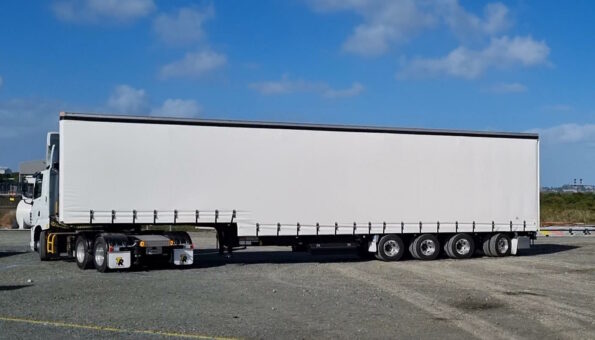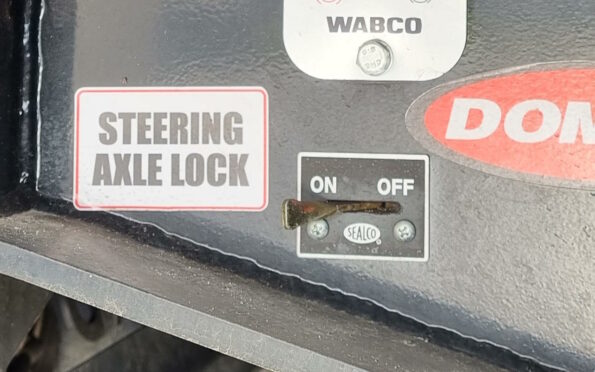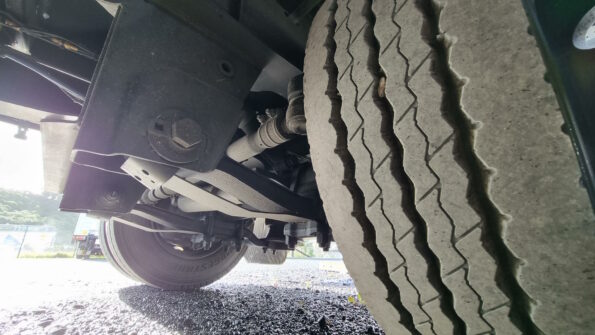Some vehicles have one or two axles at the rear which steer passively, i.e. they are not turned by the steering wheel. For example, when a trailer is pulled to the right, the rear-steer axle pivots the wheels to the left to help the trailer turn, and to reduce sideways scrubbing on the tyres. This means reduced tyre wear (estimated at 4 tyres per 100,000km) and lower fuel consumption (estimated at up to 1000 litres per 100,000km, or 1%). It also provides for a tighter turning radius, assisting with manoeuvring.
The maximum steering angle is usually set between 8 and 27 degrees, depending on the type of vehicle. Modern systems have a steering lock which activates when driving in reverse.
The axle itself functions like a regular axle in terms of its specification – it will have its own brakes and be capable of supporting a standard axle loading. It can have single tyres or duals.

The axle may be able to be locked using a switch on the side of the vehicle.


The types of vehicles that tend to have rear steering axles are:
- Quad trailers (i.e. a trailer with four axles) – the rear one or two axles
- Tri-axle trailers (i.e. a trailer with three axles)
- 3-axle buses and coaches
- 8×4 and 6×2 rigids (uncommon)
- 5-axle prime movers (uncommon)
The rear-steer axle might also be a lift axle which can be lifted up when not required.
Rear-steer axles might be actively steered on some vehicles such as mobile cranes where a 9 axle crane could have up to 5 front-steer and 2 rear-steer axles.
Hydraulic modular trailers have every axle able to steer, but these are not passive.
In the late ’80s several cars, including the Honda Prelude, featured four-wheel steer which steered the rear axle. This was abandoned by car manufacturers fairly quickly because of its unnecessary cost and complexity.
